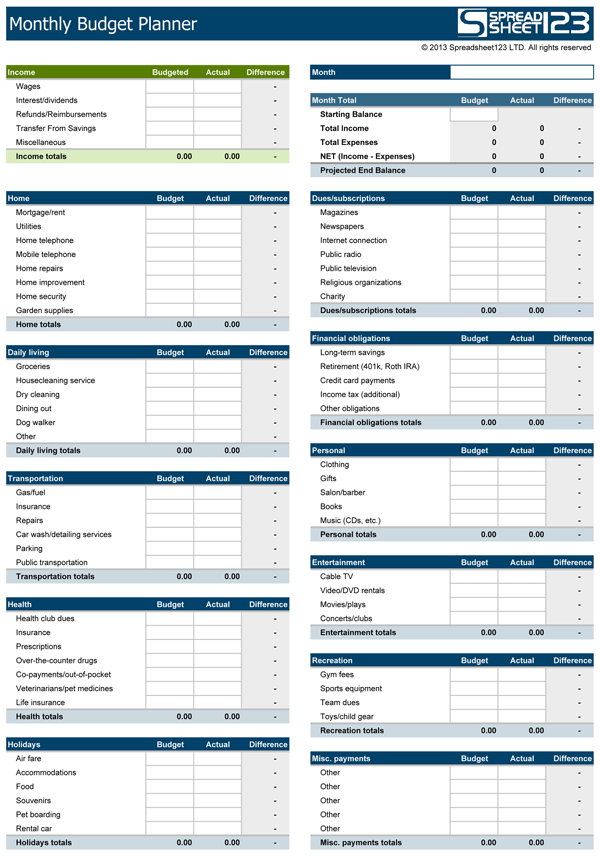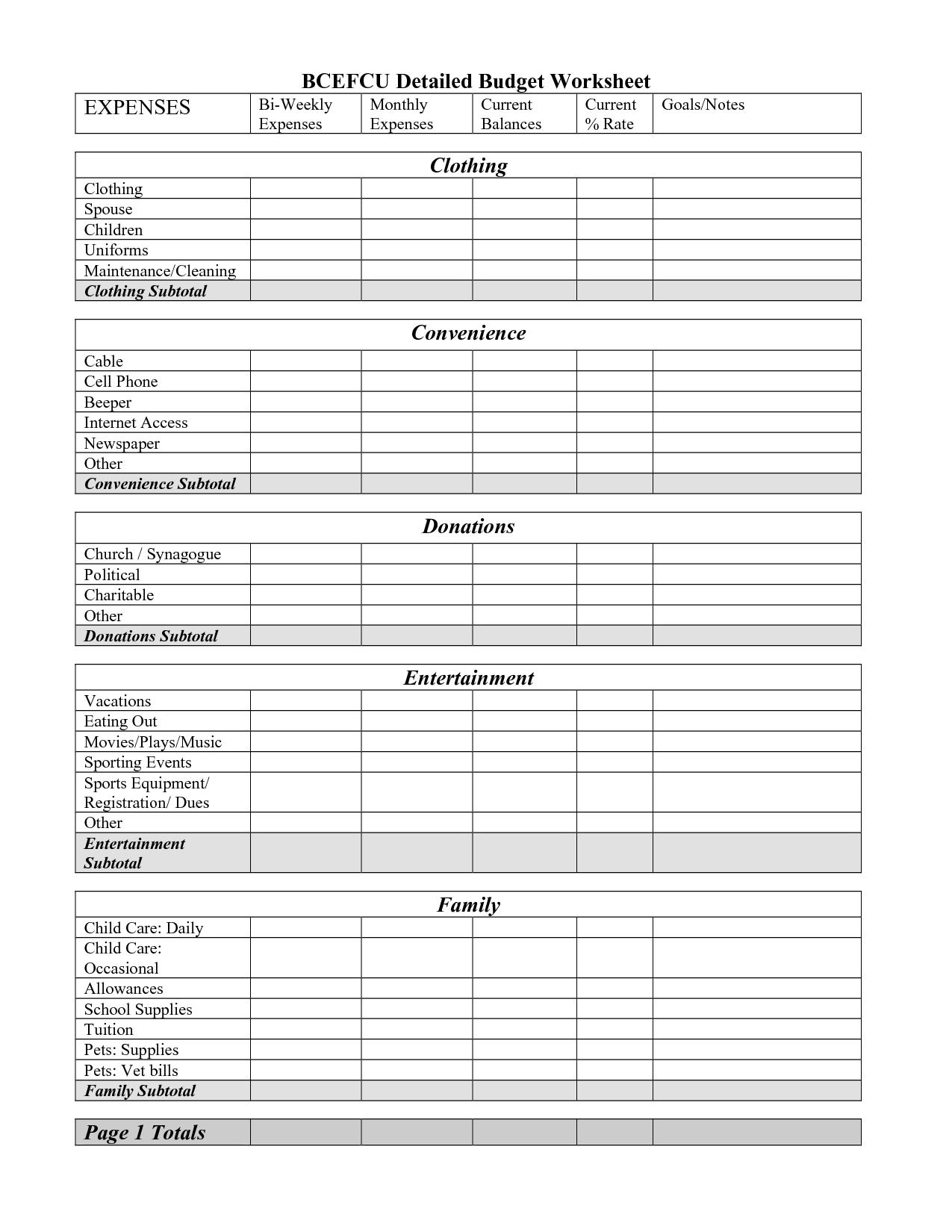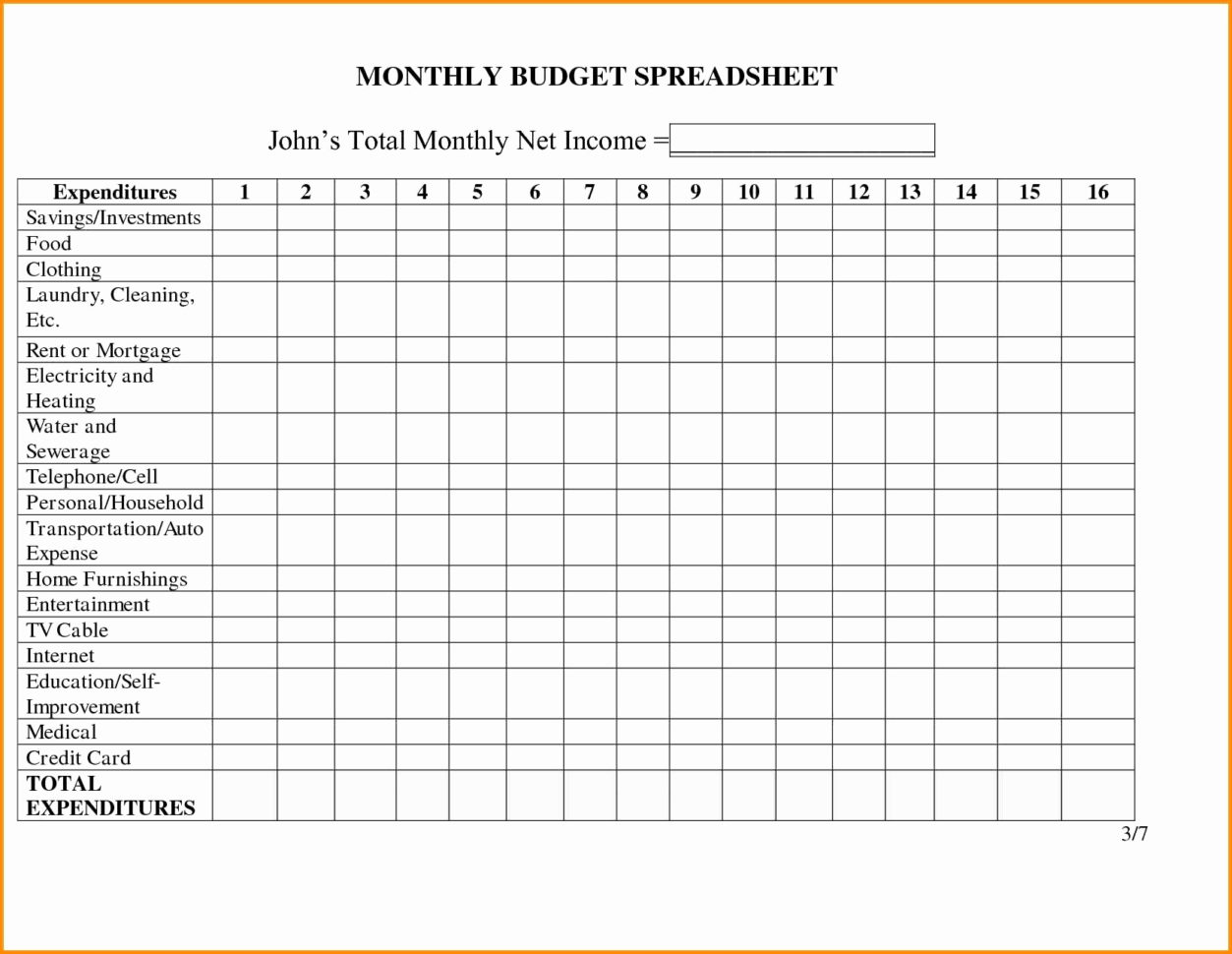

The Monthly Dashboard View is an easy way to see where your budget stands for the current month. Insights sheet with personalized charts to help you better understand your financial trends.Yearly budget sheet to plan your year in one place.
#Monthly expenses template free
This easy-to-use free template includes the following sheets: To help more people budget with the benefits of a spreadsheet, Tiller Money has created a free, non-automated version of our Foundation Template for Google Sheets. Spreadsheets are uniquely useful tools for making and tracking your budget. It allows us the opportunity to see the gap between what we say is important to us and how we spend our money.” – Carl Richards Use This Free Monthly Budget Template to Manage Your Money “Budgeting forces us to face the reality of how we spend.

(Use this free 50/30/20 budget calculator to figure this out.) Financial experts recommend 20% of your income should go toward eliminating debt and saving for emergencies and then retirement. Savings and debt reduction goals– Beyond expenses, it’s important to budget for short and long term savings.Variable expenses such as property tax payments, holiday gifts, and vacations fluctuate month to month. Your expenses – Fixed expenses include housing, food, car payments, and student loans.Your income – After all sources of income are tallied, and after taxes and other mandatory payments are deducted, how much are you actually bringing in each month?.In terms of the numbers that will help you make a budget, you need to know: We’ve previously noted that the three steps to get started with any personal budget program are: Savings: emergency fund, RRSPs, RESPs, TFSAs, seasonal expenses (e.g.Want to feel financially organized in less than thirty minutes? No problem: make a plan for your money with a monthly budget that will help you track expenses and prioritize where your money goes. Personal: tobacco, alcohol, books, music, clothing and shoes, donations, subscriptionsĮating Out: meals, snacks, take-out, beverages (coffee, tea, juice, soft drinks)Įntertainment: recreation, sports equipment and fees, movies, concerts, hobbies, gamingĬhild: daycare, lessons and activities, allowance, school supplies and fees, babysitting, programs, tutorsĭebt Payments: credit cards, loans, leases, support payments, government debts, personal debt Health Care: medical premiums, life insurance, medication, eye care, dental, supplements, wellness costs Transportation: fuel, auto insurance, transit, parking, taxi, rentals, car sharing, tolls Living: personal care, bank fees, salon and spa services, dry cleaning, pet costs, memberships (fitness, clubs, associations) Groceries: food, baby needs, household supplies, toiletries Household: furnace, water tank, roof and gutters, decor, upgrades, storage locker, gardening, cleaning services, outdoor equipment and maintenance Utilities: phone/cell, cable/internet, gas, hydro, security Housing: mortgage, rent, strata fees, house insurance, property taxes View a sample of a completed tracker (from the previous version of our Monthly Expenses Tracker).Įxpense Categories – Know Where Your Money is Going This becomes the cash balance for the next week. If there’s a surplus, you should have money in your wallet or bank account.

Total all columns and subtract actual expenses from actual income.On these pages, keep track of seasonal expenses rather than recording on your weekly pages. You also need to record weekly savings amounts on pages 14 – 15 of the Expense Tracker.You may want to track coffees, dining out, or fuel separately. You can then use the blank columns to create your own categories. List the dates down the left side and record actual money spent each day.You should also list any income you may expect to receive during each week. Record cash balances on hand or in your bank account.

For example, a 7 day tracking period would be March 30th to April 5th.


 0 kommentar(er)
0 kommentar(er)
